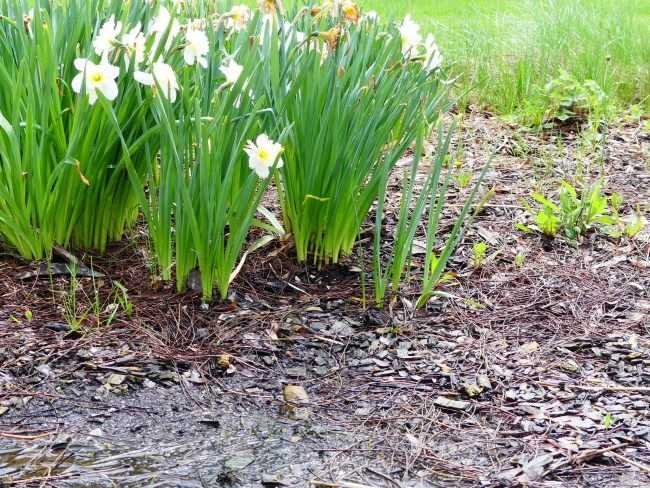Minimizing the impact of the wet season on your garden
By Vijai Pandian
Spring rain is a welcoming gift for gardeners but too much rain can cause plenty of troubles for plants and can delay the gardening season. Excess moisture around the root and crown of the plants can promote root rot diseases and collapse the plants in poorly drained soil. Raspberries, strawberries, herbaceous perennials, arborvitaes, spirea, cotoneaster and many other young, drought tolerant trees and shrubs are sensitive to week long standing water. Coupled with fluctuating temperature, too much rain can also slow the bud break and affect the spring blossoms. Flooded water leaches away the nutrients in the top soil and can cause plant nutrient deficiency. Foraging insects like bees, native pollinators and other beneficial insects can be impacted with continuous spring rain and delay their life activity. In addition, normal spring garden chores can also get delayed as the wet soil limits the accessibility in to garden.
For gardeners, patience is the virtue during wet weather. Don’t be hasty in planting, fertilizing or pruning plants when the forecast calls for rainy week. Keep a tab on the weekly weather forecast and plan your spring gardening chores. Here are some tips that can help in minimizing the impact on your landscape and garden beds during wet weather period:
- Avoid walking on wet garden soil and don’t till your wet soil as it can ruin the soil structure when it dries. Stepping stones, rubber mats can provide accessibility to your garden beds with minimum disturbance to the soil.
- Rake any mulch around rose bush, herbaceous perennials, asparagus, rhubarb, strawberry and raspberry plants to allow the soil moisture to dry.
- Hold off in fertilizing your lawn and garden beds. Don’t add any spring mulch around the base of your trees, shrubs.
- Avoid pruning/ shearing any fruit trees, woody ornamentals, evergreens during wet weather period. This helps in minimizing the spread of foliage pathogens.
- Raised beds, containers and planter box gardening could be an alternative especially if the wet weather prolongs during growing season.
- Assess your landscape and garden beds to determine wet areas in the site and redesign the site in future months to divert the excess rain or select right type of plant species or install a rain garden to capture the run off.
- In some landscape and garden sites (especially around your downspout), simple strategy like digging a trench to channel the excess water away from the garden beds or plants can resolve the issue. Or you can install a drain tile pipe, French drain if the wet weather continues.
- When selecting woody ornamentals for wet site, choose the right plant species for the site. Trees and shrubs like baldcypress, dutch elm resistant elm cultivars, thornless honeylocust, black hill spruce, red osier dogwood, American cranberry bush viburnum, button bush can tolerate extended periods of flooded conditions.
For more gardening info or plant health related questions, contact us at planthealth.advisors@extension.wisc.edu




